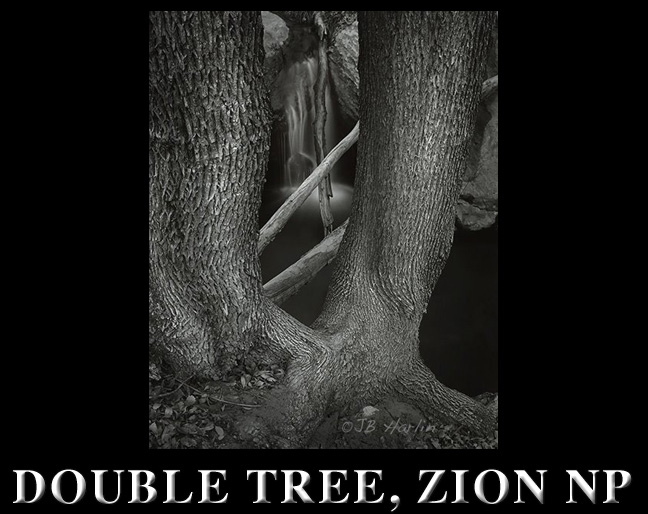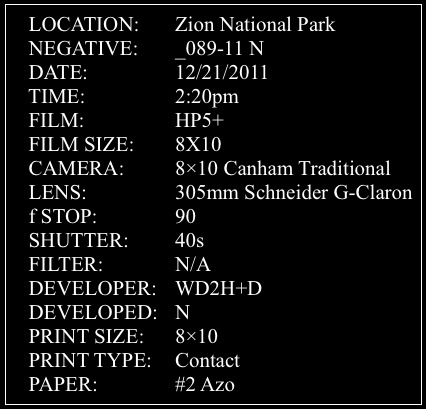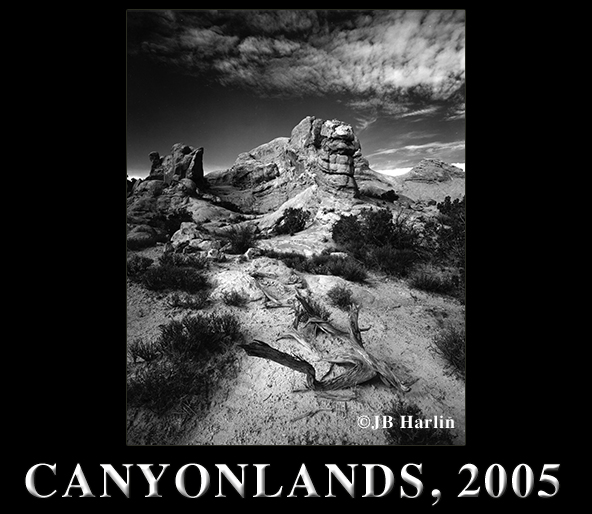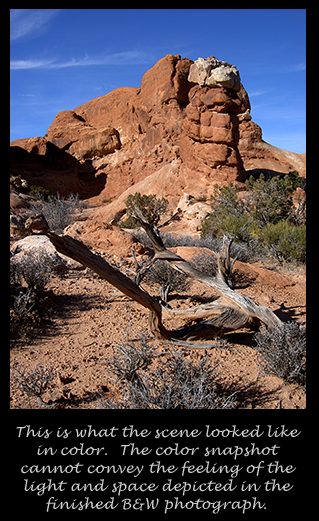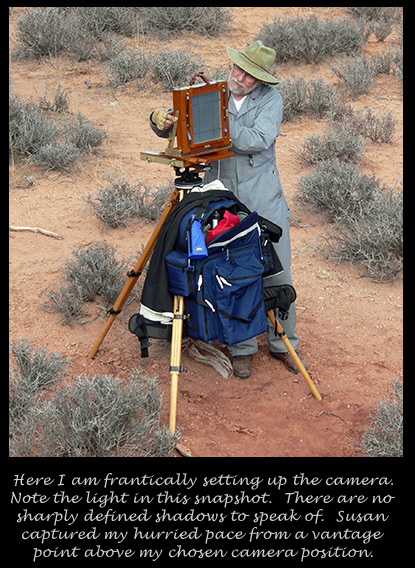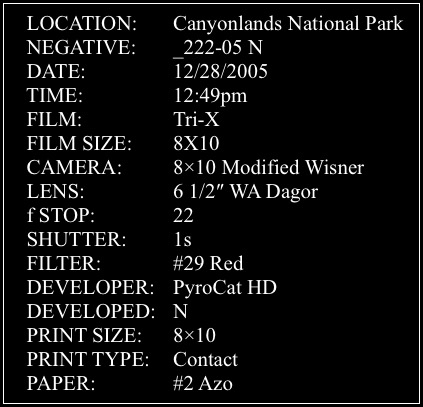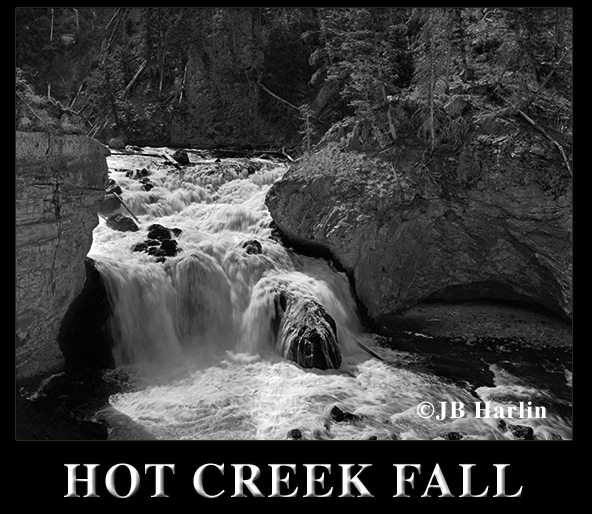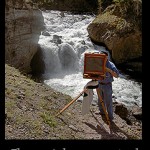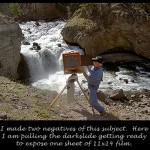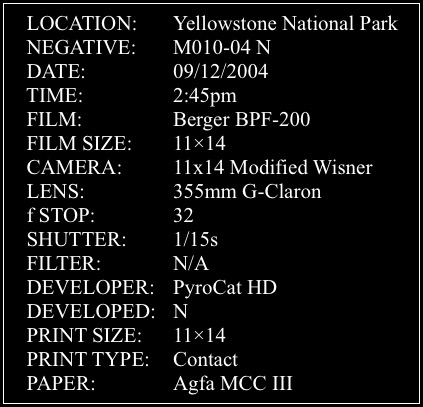A lot of time is spent just scouting an area or a place searching out something of interest to photograph. In 2011 we found a very interesting area in Zion National Park. We spent several days along this little trail that followed a small stream. This area yielded a wealth of subject matter. We were in a deep canyon where the light was soft and subdued all day. There was a very brief time toward late afternoon when the sun came blasting in, but the vast majority of the day we were in very soft, wrapping light. This wrapping light was accentuated by the 1,200 foot high sandstone walls that acted as a gentle reflector above where we were working.
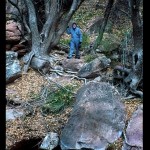 The gentle little stream continually ran a steady flow of water and there were rocks, trees, moss and cascading water everywhere. I had been working in this area for several days and had noticed this double tree several times. I knew there was something there, but I had a really hard time with the composition. I just couldn’t find the ‘spot’ that I wanted. I know I walked past this double tree every day and there was something that kept calling me back. I knew what I wanted. Yet, I also knew that because of the placement of the elements as I envisioned them made for a depth of field dilemma. I knew what I wanted. . . just didn’t think I could pull it off.
The gentle little stream continually ran a steady flow of water and there were rocks, trees, moss and cascading water everywhere. I had been working in this area for several days and had noticed this double tree several times. I knew there was something there, but I had a really hard time with the composition. I just couldn’t find the ‘spot’ that I wanted. I know I walked past this double tree every day and there was something that kept calling me back. I knew what I wanted. Yet, I also knew that because of the placement of the elements as I envisioned them made for a depth of field dilemma. I knew what I wanted. . . just didn’t think I could pull it off.
The thing you have to keep in mind is, if you do not try, you are certain to fail. I finally decided to take a stab at the double tree with the cascade in the background. I chose a moderately wider than normal lens for the 8×10, hoping I would be able to get the depth of field I needed. The Schneider 305mm G-Claron is one of my usual lenses that I carry with my 8×10. The light was incredibly beautiful. I can’t describe how it made things look, other than it was coming from behind the camera, created by the sun reflecting off the high canyon wall that faced basically southwest. I knew I had to expose the film once I got the camera in place. What I saw on the ground glass was exactly what I wanted. . . there are those times you just know. I metered and exposed. . . with fingers crossed.
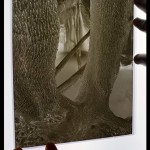 When I processed the negative I felt really good. When I made a proper proof, I was even more pleased. This was a pretty easy print to make. It printed very well on #2 Azo and only required a little selective bleaching on the cascade in the background to bring up their value a little. I also did a little bleaching on the tree trunks to bring up their contrast and make them glow even more.
When I processed the negative I felt really good. When I made a proper proof, I was even more pleased. This was a pretty easy print to make. It printed very well on #2 Azo and only required a little selective bleaching on the cascade in the background to bring up their value a little. I also did a little bleaching on the tree trunks to bring up their contrast and make them glow even more.
All in all, I am very pleased with this photograph. I was able to capture what I felt at the time I exposed the negative, and that is what it is all about. There are times you have to really push your equipment and your capabilities. Keep in mind; if you don’t try there is only one outcome! One other thing, we were in the same place a year later. We wanted to get back into the area and look at some more possibilities, but due to the spring rain the trail was washed out. It was impossible to access the place we were working the year before without wading deep water. Another lesson. . . if you want something, go for it. There is no guarantee it will be there next time.
JB
Click on the thumbnail images to see a larger view and the captions.

